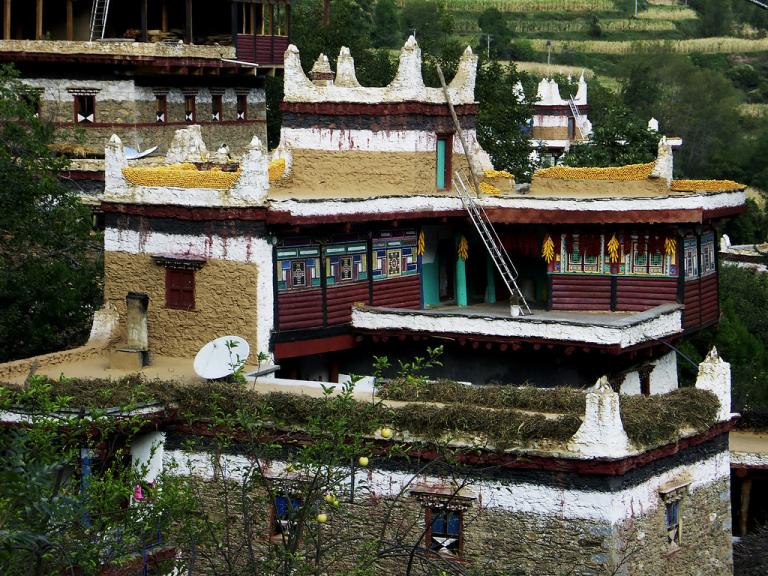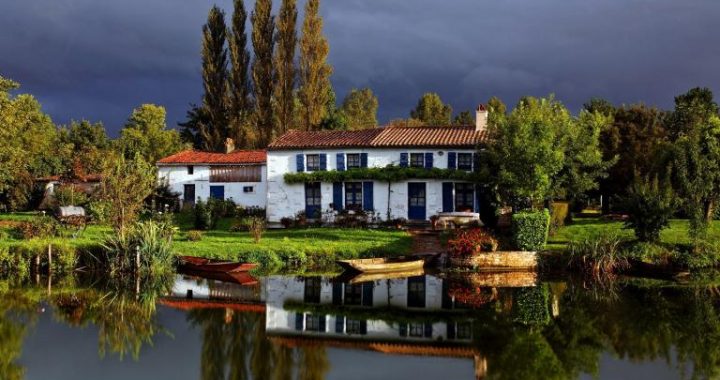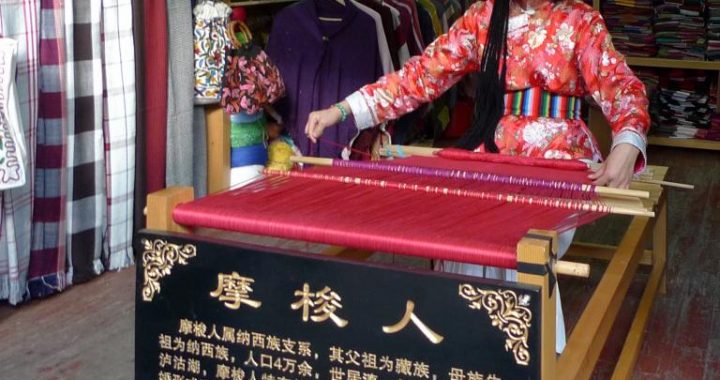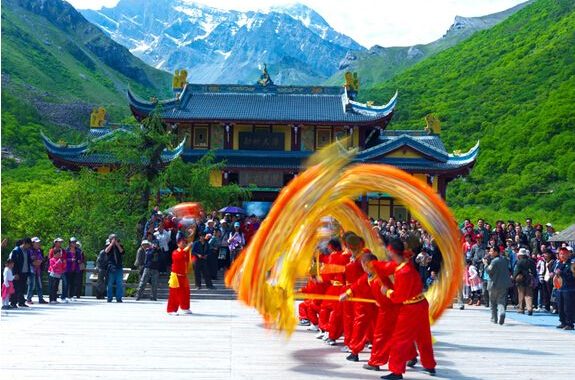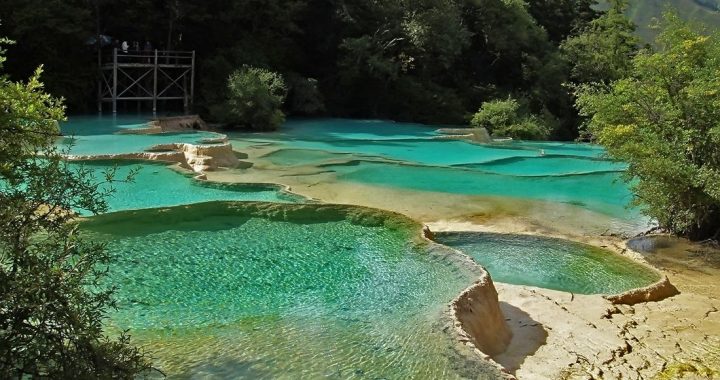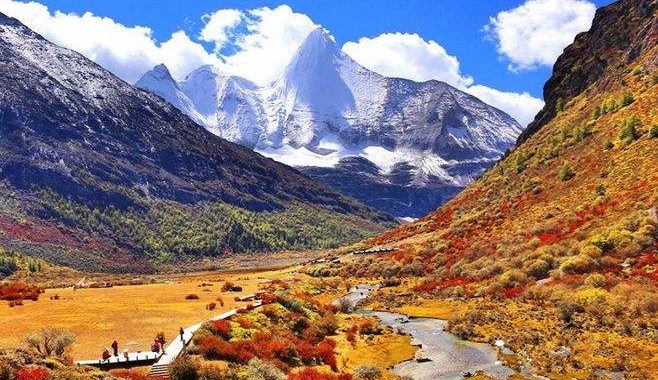Jiaju Tibetan Village
4 min readJiaju Tibetan Village is located in Danba County in the hengduan mountains of westernSichuan. It is situated on a mountain slope 500 to 600 meters higher than the town of Danba, which is already quite high. A whitewater river, the dajin River, flows through the valley below the villages and then into the dadu river.
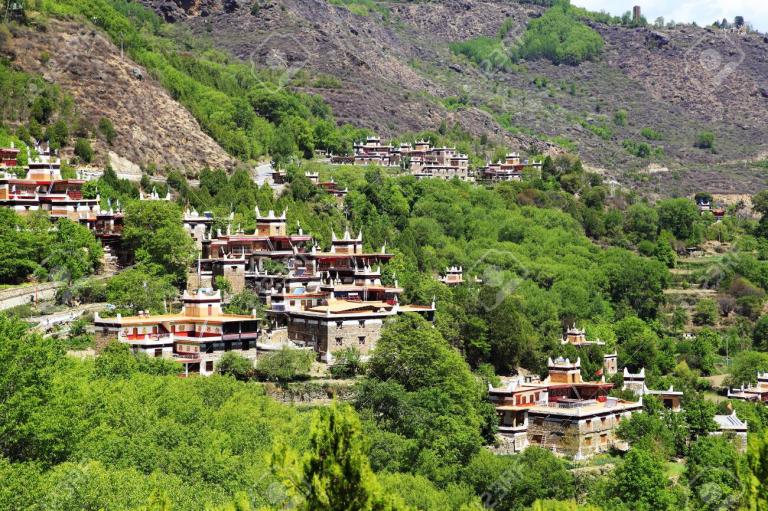
The term jiaju in Tibetan means a group of 100 or more households. Jiaju tibetan Village covers an area of five square kilometers and is occupied by 149 households of Jiarong Tibetan people, whose houses are scattered up and down the mountain slope nearly a thousand meters. The landscape around the village is beautiful in all four seasons. Inspring the peach, pear, and pomegranate blossoms turn the slopes into a sea of red and white flowers followed by a bursting forth of lush greenery. In summer, the houses hide behind a veil of vegetation like a shy girl behind a veil, and when the wind gently blowsthe trees the houses can be glimpsed through them from time to time. In autumn, the slope turns into a multi-colored tableau as the trees leaves turn red and golden Bright golden corn and brilliant red peppers are hung from the eaves to dry. Pears, apples, and pomegranates ripen on the trees. It is only in the winter when the houses can be seen clearly, and their graceful design and exquisite craftsmanship can be fully appreciated.
The homes in the village boast unique Tibetan craftsmanship Each family has its own Most of them face south. Some are in clusters of three to five. and others st and apart from the others. The houses are all built in a similar style that is adapted terrain and reflects the tibetan culture. They all have gardens in front and are surrounded by fruit trees, and all this combines to make jiaju tibetan Village a beautiful mountain locale. The mountain slope rising from the river in the valley to the mountain ridge is studded with outcroppings and recesses. And it is in the recesses where most of the houses are situated So they are partially hidden by the orchards and fields and blend in harmoniously with the mountain landscape of flowing streams and snow-capped peaks stretching out with all the aesthetic appeal of a classical landscape painting.
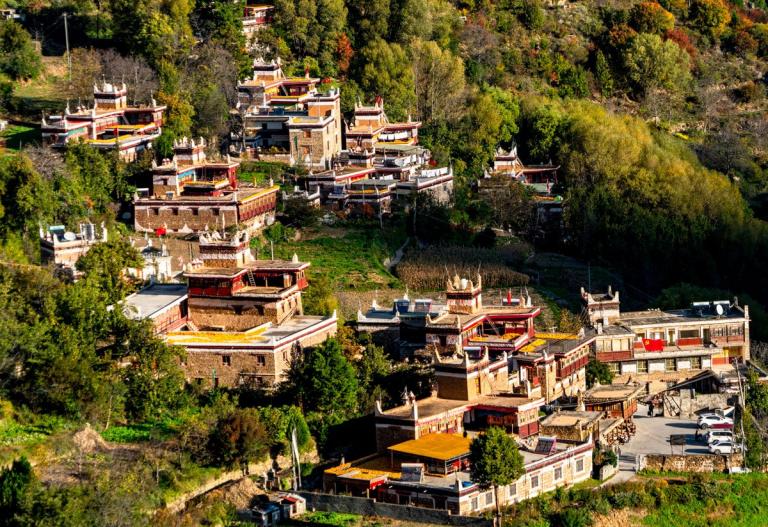
The houses are built in the style of ancient blockhouses and are called blockhouse homes. Originally blockhouses and houses were built according to different styles, but over time, the two styles merged seamlessly. From the outside, the houses can be seen to have haracteristics of both styles. Around the upper part of the building they all have painted bands of yellow, black, and white. This is a unique characteristic of jiarong homes. What s most unique about the houses is that at the four corners of the roof there are miniature white stone towers representing deities of the four cardinal directions. the towers have sutra streamers attached to them, which give the roofs the appearance of half moons. every year during the spring and fall worship rituals and during sacrifices to their ancestors,the jiarong people offer sacrifices at these miniature towers Roofs of village buildings.
All the walls in the village buildings are made from stone blocks. Most of the buildings are three stories high, but some are four. The bottom floor is used for raising livestock; the second floor has the livingroom and kitchen the bedrooms are on the third floor, and the fourth floor houses a small chapel. Traditionally, roofs were made of adobe but now cement is commonly used. The roof is built like a patio, and families use their roof for a variety of activities and dry grain on it at harvest time. On the edge of the roof closest to the mountain, homeowners erect a tripod-shaped assembly on top of which an earthenware jug is placed They use it when they pray for blessings whenever they need to handle important business or someone is setting off on a long trip.
The present state of the village buildings completely preserves the basic characteristics of the jiarong people. For example, they are still made from the same materials using the same technology, and they maintain the traditional simple appearanceHowever, as times have progressed, small changes have occurred but these changes have inno way affected their traditional character or the charm of modern generation of jiarongpeople. In 2006, Jiaju Tibetan village was selected by the Chinese mass media as china s most beautiful village.
Jiaju Tibetan Village is not only blessed with magnificent natural scenery, but also has a rich atmosphere of pure and simple village life. all the village people, male andfemale, young and old, are good singers and dancers. They re hardworking and hospitable and not only act courteously but are courteous by nature. Here you can not only sample Tibetan rice cakes and tea, but also enjoy the guozhuang Dance, which is steeped in the traditions of the jiarong people.
